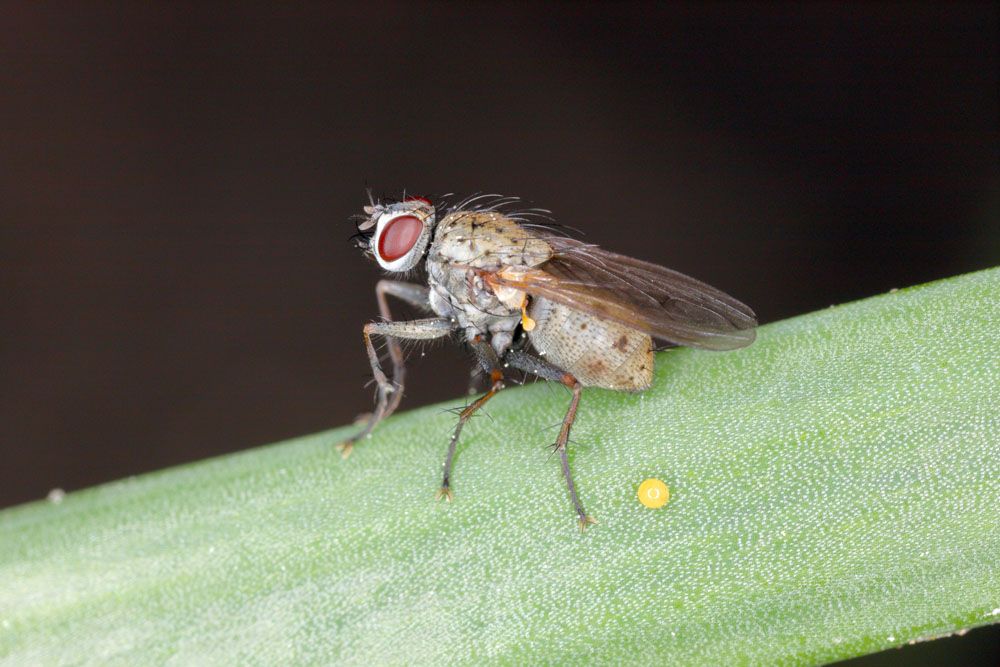
Onion Maggot – Delia antiqua
Onion Maggot (Delia antiqua)
Common Name: Onion Maggot
Latin Name: Delia antiqua
Appearance:
Onion root maggot flies are small, hump-backed grey-brown flies around 5-7 mm in length. Onion, seedcorn, and cabbage maggot flies are difficult to discern with the naked eye, but each will only be seen on or near the crop family they are associated with.
Host plants:
Allium cepa (onion), Allium sativum (garlic), and Allium porrum (leek) are the main hosts.
Territory:
The onion maggot (onion fly) is widespread across the northern hemisphere. It was allegedly brought to North America from Europe shortly after European colonists landed. It prefers cool weather and is only a major pest in northern regions.
Damages caused by Onion Maggot:
Onion seedlings are very sensitive. Larvae that feed on the roots or the swelling base of the plant typically destroy it. Early indicators of onion fly assault include yellowing and withering of the outer leaves and plant collapse. In Europe, the damage is most common from June through August. During the summer, two, rarely three generations and maggots of the second and third generations will tunnel into onion bulbs and attack the root.
Life history and habits:
Onion maggots spend the winter in the soil as little brown pupae. Adults emerge in the spring and can travel up to one mile in search of host plants. The flowering of the ubiquitous roadside plant, yellow rocket is an excellent predictor of the beginning of root maggot flight. Female flies locate their host crop to deposit eggs near the stem’s base. Cool, wet soil conditions promote egg survival, but soil temperatures above 95°F in the top 12 to 1 inch destroy them. Every year, there are three generations.
